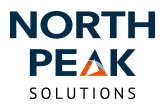Additional Resources:
- This Power of Us post provides a comprehensive outline for maintaining data quality, including links to helpful resources
- This Salesforce help article outlines a concise 6-step process for ensuring data quality from discovery through long-term CRM maintenance.
As you’ve probably concluded, there are many tools to help keep data healthy and users engaged. To find the right one, focus on correctly diagnosing the problem– finding the cause of the issue will point the direction to resolving it.
Want to discuss Data Quality and User Adoption with us?
If you want to talk through issues your organization is facing with data quality and/or user adoption, if you need help setting a strategy in these areas, or if you need some convincing that this should be a top priority, contact North Peak.

About North Peak
North Peak helps nonprofits and foundations increase institutional intelligence through healthy CRM (constituent relationship management) and/or GMS (grant management system) systems and practices. Contact Us to learn how we can elevate your organization's impact.
